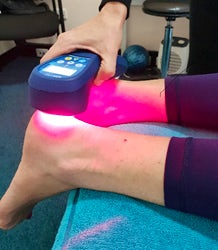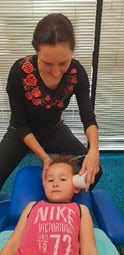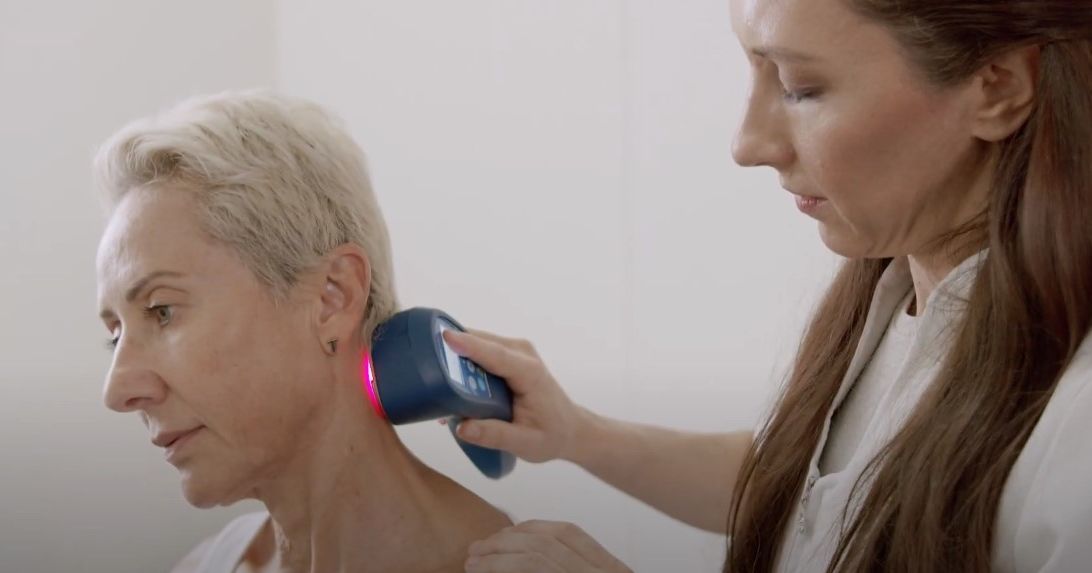
Fractures and benefits of Low-Level Laser
A modality that can be utilised to enhance the healing process of fracture is using low-level laser therapy (LLLT). Low Level Laser Therapy is a type of Photobiomodulation therapy that influence the release of growth factors that can help with bone formation as well as increasing blood flow to the broken bone to bring more nutrients in, thus promote healing of the fractured bone. A recent systematic review conducted by Jose and others (2019) found that 33 studies have shown that Low Level Laser Therapy has a positive effect on bone fracture by accelerating its healing rate.
Post cast the goal is to reduce pain lev -*els, improve and increase range of motion and regain function of the area. What our Chiropractors can do to help is offer laser therapy, which research has shown is likely to reduce pain and swelling after trauma, along with potentially promoting healing. Laser with wrist fracture has also been found to increase grip strength.
The average healing time for a fracture is 6-8 weeks, therefore if there is a small fracture our LASER TECHNICIANS can apply laser therapy during the healing time of the fracture. Laser has been found to shorten the time of fractures and is likely to initiate the process of bone healing. Whereas if the fracture is over a larger area which requires a cast, then post cast removal is the best and most effective time to begin laser therapy.
The laser also helps to treat the surrounding area, as when a fracture occurs the muscles and ligaments around the area become stressed, leading to further pain, inflammation and swelling.
 So what is laser?
So what is laser?
Cold laser therapy is low-intensity laser therapy that stimulates healing while using low levels of light. During this procedure, different wavelengths and outputs of low-level light are applied directly to a targeted area. The body tissue then absorbs the light. The red and near-infrared light cause a reaction, and the damaged cells respond with a physiological reaction that promotes regeneration.
 What does it feel like?
What does it feel like?
Although you’ll feel the laser device touching your skin, the procedure is painless and noninvasive. There will be no sound and you’ll feel no vibration or heat. Each treatment typically takes 20 minutes.
We offer non-invasive laser therapy here at Lakeside Laser to relieve pain and swelling and improve healing and recovery times and has no side effects!
What is a Fracture
You've probably heard someone mention bone fractures and breaks. Both phrases allude to a shattered bone, which is usually caused by severe force. Your doctor may refer to your condition as a fracture. Fractures are rarely fatal, but they do necessitate rapid medical attention.
Causes of Fracture
When a bone is struck by something stronger than the bone, it fractures. Fractures are commonly caused by car accidents, sports injuries, and falls.
Small fractures can be caused by repeated wear on a bone, such as repeatedly jumping up and down or running long distance. Stress fractures or hairline fractures are the terms for these types of fractures.
Fractures can occur as a result of an infection or cancer that weakens the bone. Osteoporosis, or weakening of the bones in older adults, is a common cause of fractures.
Fractures can range in severity from minor to severe, depending on the intensity of the hit and whether or not the body has been damaged in any other way. Other sorts of damage that could occur are:
- Breaks in the skin
- Nerve damage
- Muscle damage
- Organ damage
Symptoms of Fractures
The most common symptom of a fracture is pain. Most fractures are painful, especially when you try to move or put weight on the injured bone.
Other symptoms at the site of the injury include:
- Swelling
- Numbness
- Bruising or change in colour
- Bone poking through the skin
- The patient is unable to put weight on the injured area
- The patient cannot move the affected area
- The affected bone or joint may have a grating sensation
- If it is an open fracture, there may be bleeding
If you suspect a fracture, you should go to the emergency room. If you or someone else has multiple injuries or is unable to walk, call an ambulance.
How to Diagnose Fractures
Your doctor will examine you and examine the area of the injury for mobility as well as potential damage to blood vessels or joints. An X-ray of the affected bone is used to diagnose most fractures. Other tests, in addition to X-rays, may be required to determine the extent of the fracture and associated damage.
If the fracture is small, magnetic resonance imaging (MRI) or a bone scan can reveal more information. An MRI can also show the soft tissue area surrounding the bone, which may indicate injuries to nearby muscles or tendons.
A computed tomography scan (CT or CAT scan) can provide a three-dimensional image of the affected area in horizontal or vertical slices. This will reveal more of the fracture's details. Your doctor may also inject a dye into your arteries before performing a scan. The dye may make it easier for your doctor to detect blood vessel damage. Finally, nerve conduction studies can be conducted to check for any damaged nerves if nerve injury is suspected.
Your doctor will also enquire about the nature of the injury, when the pain began, and whether it has been growing worse. This will aid your doctor in determining whether additional issues, such as a blood flow disturbance, should be investigated.
How to Treat Fractures
Treatment for a fracture is determined by the type of damage, its location, and its severity. To repair the fracture, bones self-heal by creating new bone tissue. To “knit” the fractured fragments together, new bone tissue grows at the borders of the break. Because the new bone is delicate at first, it must be well protected.To protect the growing, soft bone tissue, a fracture is usually immobilised. Your doctor can use a variety of tools to immobilise the bone, including:
- Cast
- Splint
- Sling
- Combination
- Low level laser
These devices can aid in the alignment of the bone and its healing. They also make it more difficult for you to use the injured bone inadvertently. The fracture of a smaller bone, such as a finger or toe, can be immobilised by wrapping it in a soft wrap or splint. Before being immobilised with a cast or splint, the injured bone may need to be realigned into its natural position. Closed reduction is a type of realignment that can be done without surgery. This frequently necessitates the use of a local anaesthetic as well as pain relievers.
Lakeside Laser is located in Gnangara, WA 6077—just north of Joondalup—and welcomes patients from across Perth, including Victoria Park, Cockburn, Yanchep, Two Rocks, Jindalee, Wembley Downs, Woodvale, and surrounding areas.
We have HICAPS facilities onsite for easy claims with major private health insurers including NIB, HCF, HBF, AHM, HCI, and HIF.
If you have any enquiries, would like to discuss your concerns, or wish to book an appointment, feel free to contact our friendly team on 0468 429 111 or visit our website at www.lakesidelaser.com.au.
Schedule an Appointment


